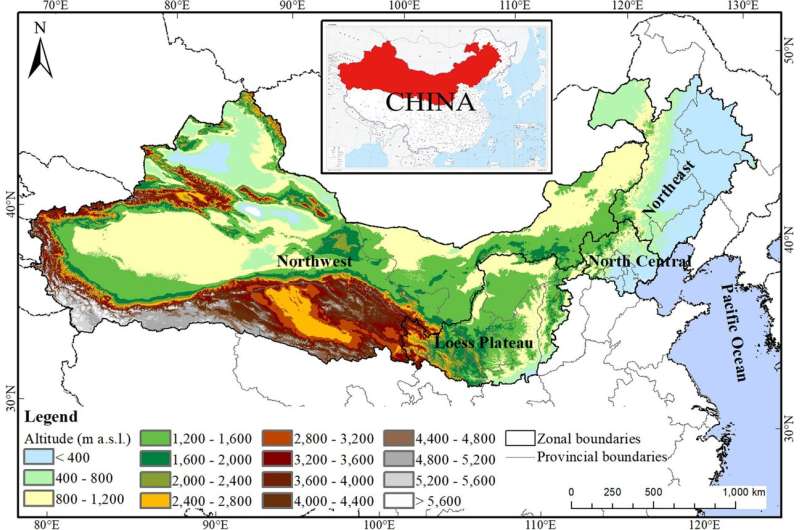This article has been reviewed according to Science X's editorial process and policies. Editors have highlighted the following attributes while ensuring the content's credibility:
fact-checked
trusted source
proofread
China's 'Great Green Wall' boosts carbon sink, study finds

Since 1978, China has been building a "Great Green Wall" of trees and shrubs across its arid and semi-arid regions to combat desertification and improve the environment. Known as the Three-North Afforestation Program (TNAP), it is the largest ecological restoration project in the world, covering the northeast, north-central and northwest regions of China.
In a study published in Ecological Processes, Chinese scientists from the Institute of Applied Ecology of the Chinese Academy of Sciences have found that TNAP has also created a significant carbon sink, absorbing nearly 5% of the country's total industrial carbon dioxide emissions between 1978 and 2017.
The researchers used remote sensing images, field observations and national forest inventory data to estimate the increase in carbon stocks in biomass, soil and the "ecological effect carbon"—mainly the carbon sequestration derived from the reduced soil loss due to afforestation.
They found that the total forested area in the TNAP project areas increased from about 221,000 square kilometers in 1978 to about 379,000 square kilometers in 2017, and that TNAP has contributed to a total carbon sink of 47.06 million tons of carbon per year over the past four decades.
In addition, the carbon sink in aboveground and belowground biomass increased from 0.843 billion tons (1015 g) in 1978 to 2.08 billion tons in 2017.
The researchers also highlighted that "ecological effect carbon" accounted for about 16% of the total carbon sink increase, indicating a critical role of ecological effects in shaping the distribution of carbon stocks in the protected forests.
They suggested that the carbon sequestration benefiting from the ecological effects of afforestation should not be ignored when estimating carbon sink and parameterizing carbon-related models.
This study provides a benchmark for evaluating the value of national ecological restoration projects in carbon sink and ecosystem function assessment.
More information: Jiaojun Zhu et al, A large carbon sink induced by the implementation of the largest afforestation program on Earth, Ecological Processes (2023). DOI: 10.1186/s13717-023-00455-8
Provided by Chinese Academy of Sciences





















